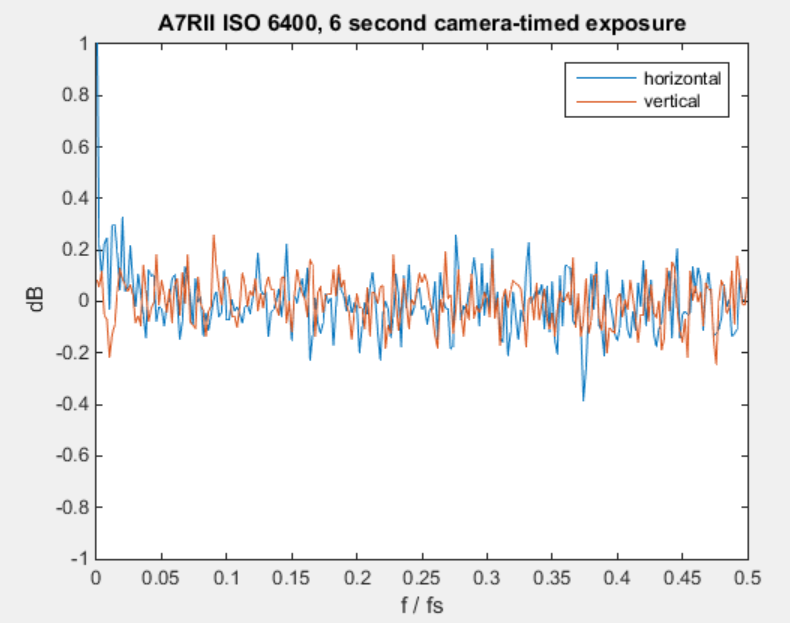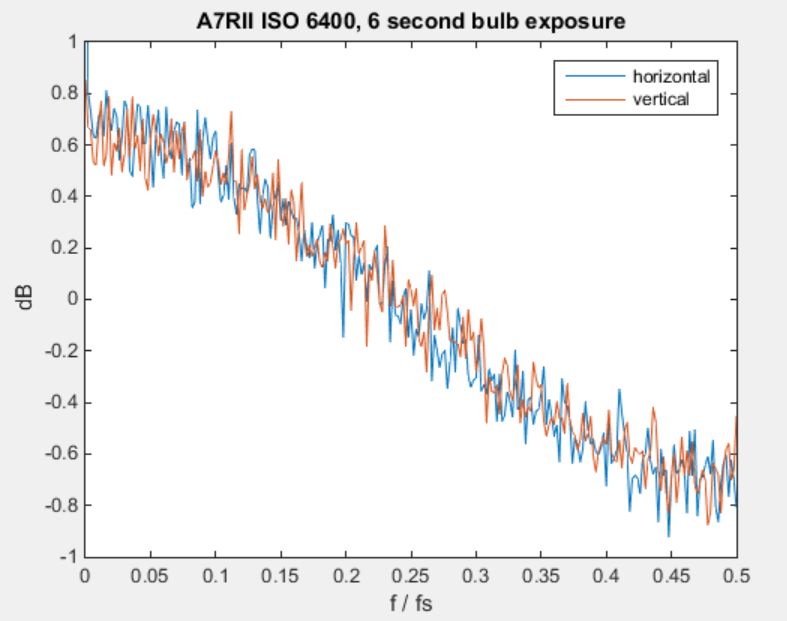The other alpha 7 cameras switch from 13-bit to 12-bit precision when the shutter is set to bulb, even if the shutter mode is single shot. Is that the case with the a7RII?
Yes, indeed.
Here’s the histogram of a 6-second single shot, ISO 6400, dark-field exposure made using the camera’s shutter timing mechanism:
Every other histogram bucket is MIA, ergo, 13 bits. And here’s the histogram of a six-second exposure made under the same conditions, but using bulb:
Only every fourth histogram bucket is populated. That means 12 bits of precision.
Now let’s look at the frequency spectra of the dark-field noise. I selected a 1000×1000 pixel crop in the center of one of the raw green channel images.
First, with the camera doing the timing:
A nice flat line, indicating that the camera’s not messing with the information with spatial filtering. The units of frequency are linear, with zero (dc) on the left and half the sampling frequency on the right.
Now, in bulb mode, with me doing the timing:
This is the same low pass spatial filtering that we see when the camera’s ISO knob is set to 32000 and above.
I avoid bulb mode on general principles with the alpha 7 cameras, although I am sure that there are many circumstances where the spatial filtering will do no harm to the image. You can see that the 12-bit precision does not increase the read noise at ISO 6400, although it does at base ISO and settings close to that.
You can achieve the same effect as an x-minute exposure by averaging 2x 30-second exposures in post. The Photoshop Smart Layer mean blending mode is a convenient way to do that.
It’s too bad that there’s no built-in intervalometer in the camera like the one in D8X0 cameras. I use an external intervalometer, since I don’t like the Sony downloadable intervalometer app.




[…] exposure noise reduction (LENR) option in the Sony a7RII reduced the precision from 13 to 12 bits. We have previously seen that some 12-bit modes bring spatial filtering to the a7RII. Is LENR one of […]